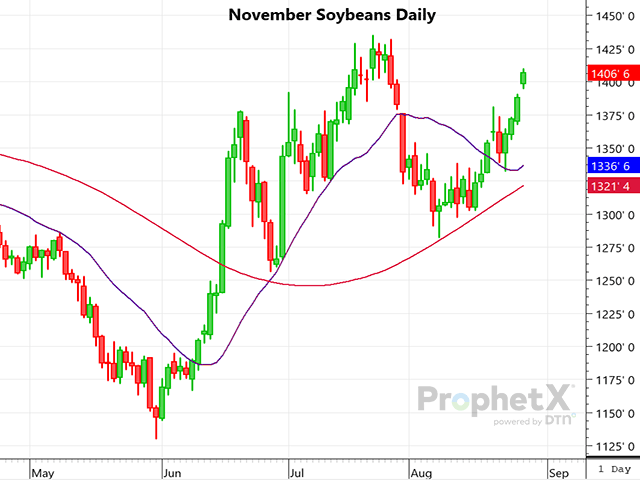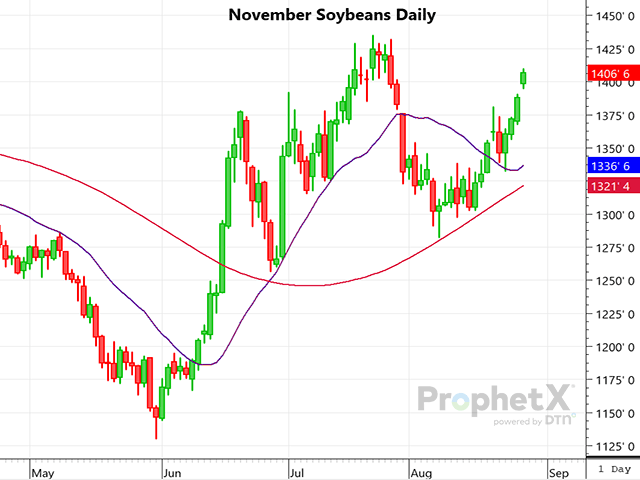Technically Speaking
Are November Soybeans Getting Overdone on This Rally?
In the past 15 trading days, November soybeans have soared $1.28 per bushel on thoughts of declining yield potential. After a very difficult start to the growing season with extreme drought in May and June, soybeans are sure not finishing on a good note, with the current hot and mostly dry August we have experienced.
Crop scouts and analysts, in unison, appear to be ratcheting down ideas on the final national soybean yield in the past few weeks. After record yield potential was estimated by WASDE early in August, the onset of triple-digit heat and the accompanying dry pattern has likely sent the potential of this year's bean crop southward. Some crop scouts and analysts are now touting the possibility the national soy yield could fall to -- or even below -- 50 bushels per acre (bpa), tightening an already tight carryout. November beans have closed higher for eight of the last nine trading days.
However, with the most recent high just 30 cents above the market, and with the soybean momentum indicators becoming very overbought, it would not be a surprise to see a setback, if only temporary. While the $14.35 level is likely to provide some solid resistance, a significant close above that level would likely mean a new leg higher on beans. Time will tell.
P[L1] D[0x0] M[300x250] OOP[F] ADUNIT[] T[]
KC December wheat futures remain down and still trading near the May low. Just since the third week of July, KC December has plunged close to $2.00 per bushel. Granted, weakness has come as Russia has just totally dominated world wheat demand, along with the rest of the Black Sea exporters. In the meantime, U.S. wheat exports have suffered with the lowest yearly export projection in many years.
While nothing has changed yet on the demand front, there seem to be too many bullish "what if" scenarios unfolding in the wheat market. Dryness has severely compromised both the Canadian and Argentine wheat crops, while developing dryness in Australia could also compromise that wheat crop early without some heavy rains in the first half of September. Also, with the Indian monsoon rains very disappointing, it is possible India becomes a net-wheat importer. The other side of the coin is the Russian wheat crop has been revised higher in the past week. However, although the bears have been in total control in the wheat market, it could be foolish to sleep on wheat, especially with speculative funds short 80,000 contracts of Chicago wheat. There is a possible double-bottom chart formation on KC December wheat.
**
Comments above are for educational purposes and are not meant to be specific trade recommendations. The buying and selling of grain and soybean futures involve substantial risk and are not suitable for everyone.
Dana Mantini can be reached at Dana.Mantini@DTN.com
Follow him on X, formerly known as Twitter, @mantini_r
(c) Copyright 2023 DTN, LLC. All rights reserved.






Comments
To comment, please Log In or Join our Community .